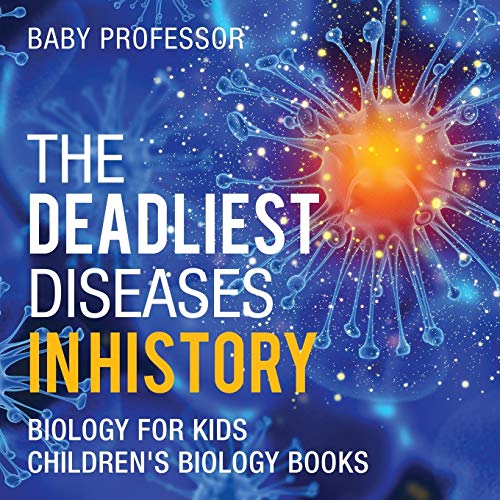-
Germs: Fact and Fiction, Friends and Foes
Lesa Cline-Ransome, James Ransome
Hardcover (Henry Holt and Co. (BYR), Jan. 10, 2017)Come meet the good, the bad, and the ugly―yes, germs!There’s so much to discover about germs. Did you know that germs make your stomach growl as they break down your food? Or that they can travel the world on anything from fleas and ticks to trains and buses? Told from the perspective of Sam the Salmonella, this informative picture book introduces young readers to helpful and harmful germs, exploring their discovery; the breakout of historic diseases; the invention of pasteurization, vaccination, and penicillin; and other fascinating details about the world of microscopic organisms. A Christy Ottaviano Book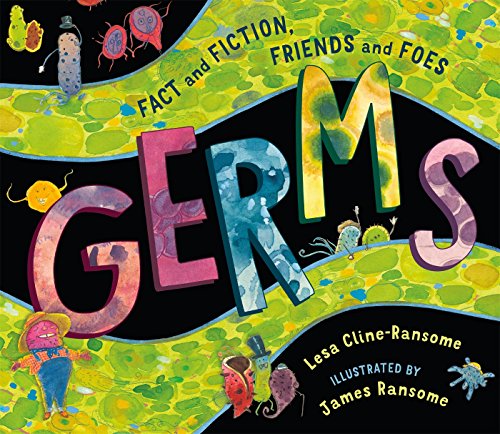 R
R
-
Basher Science: Microbiology
Simon Basher, Dan Green
Hardcover (Kingfisher, June 23, 2015)This latest book from the Basher Science series investigates the unseen world of microbes. Basher's distinctive style presents key microbes as characters with their own voice and personality. Microbiology investigates the "teensy tykes" such as algae and bacteria that are all around us in the living world, as well as a range of so-called "minibeasts", but these are not the usual creepy-crawlies that you might think of. These near-invisible creatures range from the zooplankton "good guys" to the unpleasant tapeworm and fluke. Yuk!Microbiology explains the different building blocks of the human body, as well as the nasty bugs that can make us so ill, whether it's catching a common cold or something much more deadly such as tuberculosis, the second biggest killer in the modern world. W
W
-
Virus vs. Bacteria : Knowing the Difference - Biology 6th Grade | Children's Biology Books
Baby Professor
Paperback (Baby Professor, Sept. 15, 2017)Did you know that how you got sick will determine what treatment methods will work for you? If you were infected by a virus, doctors normally would just allow your immune system to fight it. If you were infected by a bacteria, on the other hand, antibiotics would work. In this book, you’re going to learn to spot the differences between the virus and the bacteria.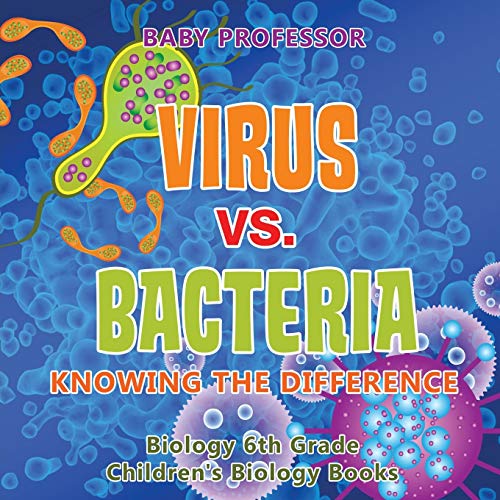
-
Bacteria: Staph, Strep, Clostridium, and Other Bacteria
Judy Wearing
Paperback (Crabtree Publishing Company, Feb. 1, 2010)Bacteria are microscopic organisms with a cell structure that is very different from that of the other kingdoms. Traditionally classified according to their shape, scientists now use DNA studies to refine the groupings of bacteria. This book examines bacteria that are found in virtually every environmentincluding those that are characterized by extreme heat, cold, and depthand, of course, bacteria that are found inside our bodies. Intriguing information highlights the key role that bacteria play in shaping the ecology of our planet, how some bacteria make their own food while others feed on ready-made food, and how some do indeed cause disease, while most do not. Case studies examine the development of new vaccines against bacterial diseases and the use of bacteria to help fight pollution. R
R
-
The Bacteria Book
Steve Mould
eBook (DK Children, May 15, 2018)In this fun, fact-packed science book for kids, young readers will discover the bacteria, viruses, and other germs and microbes that keep our bodies and our world running, as well as how and when they can be harmful and the precautions we can take to prevent them from becoming so. Meet a glowing squid, traveling fungus spores, and much more. The Bacteria Book walks the line between "ew, gross!" and "oh, cool!," exploring why we need bacteria and introducing readers to its microbial mates-viruses, fungi, algae, archaea, and protozoa. The Bacteria Book is a fun and informative introduction to a STEM subject that brings kids up-close to the big world of tiny science. With remarkable photography, kooky character illustrations, and lots of fun facts, this book uses real-life examples of microbiology in action to show how tiny microbes affect us in big ways. X
X
-
Meet Bacteria!
Rebecca Bielawski
Paperback (CreateSpace Independent Publishing Platform, Oct. 8, 2014)Book 1 in the MUMMY NATURE series of children's books.Peek through the microscope and down into a fantastic world of teeny tiny shapes, amazing colours and little friends who want to say, Hello. Who are these bacteria? Where do they live and what do they do all day? Meet Bacteria! is for little kids brimming with curiosity. It gives them their first basic notions of bacteria; a very interesting topic for children, seldom dealt with in children's books at this level.What we can learn:The idea of the microscopeWhy we should wash our handsConcepts: Basic bacteria shapes, some bacteria habitatsNew words: Bacteria, Microscope, Rod, Chain, Bunch, MultipyPAGES: 26 WORDS: 253 LEVEL: Preschool - 6yrsOther books in the series: Bees Like FlowersTravelling SeedsMUMMY NATURE series. Nurturing children's curiosityEach book in the series is one mini nature lesson wrapped up in colour and rhyme. These books are intended for very young children including toddlers and will give them just a glimpse into some of the wonders of the natural world. Illustrated for maximum vibrancy and visual impact, using rhyme to engage young minds and encourage participation. Read the rhymes to your children and soon they will be reading them to you! The narrator is a small child and keen observer who tells us in short rhyming phrases everything she thinks we should know, and all about the magical things she sees around her. Sometimes she is camouflaged in the long grass and other times she has to climb a tree to get a better look. E
E
-
Science Comics: Plagues: The Microscopic Battlefield
Falynn Koch
Paperback (First Second, Aug. 29, 2017)“This useful introduction to the topic of disease and immunity is recommended for graphic novel enthusiasts or as a companion text in science classes.”―School Library JournalWriter/illustrator Falynn Koch’s Science Comics: Plagues takes readers across the microscopic battlefield to get to know the critters behind history’s worst diseases. We delve into the biology and mechanisms of infections, diseases, and immunity, and also the incredible effect that technology and medical science have had on humanity’s ability to contain and treat disease.Every volume of Science Comics offers a complete introduction to a particular topic―dinosaurs, coral reefs, the solar system, volcanoes, bats, flying machines, and more. These gorgeously illustrated graphic novels offer wildly entertaining views of their subjects. Whether you’re a fourth grader doing a natural science unit at school or a thirty-year-old with a secret passion for airplanes, these books are for you! U
U
-
Are All Bacteria Dangerous? Biology Book for Kids | Children's Biology Books
Baby Professor
Paperback (Baby Professor, March 15, 2017)If you're child is into science, or you would like him/her to be, then this biology book is a must-have! Bacteria is always all around us but that doesn't mean we should be perpetually afraid of them. Lack of knowledge on the subject will make you fear too much. That is why it is important to encourage your child to pick up the habit of reading.
-
Ebola: Fears and Facts
Patricia Newman
Library Binding (Millbrook Press TM, Aug. 1, 2015)Ebola is a deadly contagious disease. From 1975 to 2013, it killed about 1,500 people. But a 2014 epidemic killed more than six times that number. At first the outbreak was contained to one country. But soon it spread to two others―the virus was on the move, and people were scared. When two American healthcare workers became infected and were sent to the United States for treatment, many people feared a pandemic―an outbreak that would spread all over the world. Could it happen? Ebola: Fears and Facts takes you behind the sensational headlines to address questions and concerns about the virus. Learn about the history of the disease, its symptoms, and how it spreads. Find out how the 2014 epidemic compares to past Ebola outbreaks, as well as to outbreaks of other infectious diseases. With a question-and-answer section and reference maps, Ebola: Fears and Facts will help you to better understand this most-feared disease.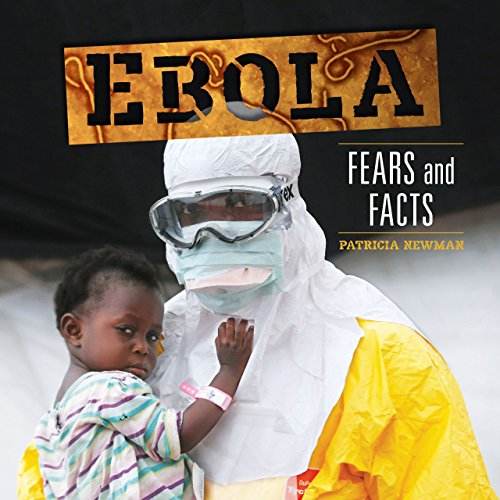 X
X
-
Inside Your Insides: A Guide to the Microbes That Call You Home
Claire Eamer, Marie-Eve Tremblay
Hardcover (Kids Can Press, Sept. 6, 2016)?Wherever you go, tiny hitchhikers tag along for the ride,? this intriguing illustrated nonfiction book begins. ?The hitchhikers are actually microbes --- tiny living things so small that you need a microscope to see them. And every person carries around trillions and trillions of these critters.? Six of the most common ?critters? that live in and on our bodies are introduced here: bacteria, archaea, viruses, fungi, protists and mites. Each one has its own preferred environment, and readers will be startled (and likely a little grossed out!) by the many places they live, including the hair follicles on our faces, the folds of our tongues and the lengths of our guts. Just as surprising, only some of them are ?bad guys? that cause disease, and many of them are actually ?good guys? that keep us healthy. There's even research currently being done on ways to improve or fix our collection of microbes as a way to make us healthier. Author Claire Eamer's clear, well-organized and accessible writing --- augmented throughout with fun facts and silly microbe jokes in sidebars --- keeps the book interesting and enjoyable. Marie-Ève Tremblay's bright and cheerfully funny illustrations bring the details to delightful life. With its cutting-edge information about a topic children will find fascinating, this book makes an excellent complement to a life science lesson on the human body. It would also work well for a class on healthy living. A table of contents, glossary and index are included.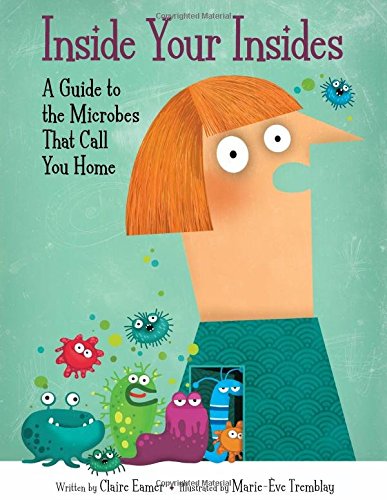 S
S
-
It's Catching: The Infectious World of Germs and Microbes
Jennifer Gardy, Josh Holinaty
Hardcover (Owlkids, April 15, 2014)Don’t be afraid to delve into the good, bad, and sometimes truly ugly world of germs. Microbiologist Jennifer Gardy, who calls herself a disease detective, picks up her microscope to bring expert insight to the microbes that are all around us but are too small to see. Irreverent, playful, and contagious in all the best ways, It’s Catching discusses a range of germs and the diseases they cause, from the common cold to food poisoning to the Ebola virus. Young readers will be enticed and pretty grossed out while becoming immersed in information about pus, bacteria, DNA, genomes, and more. They will learn how germs have shaped human history and also about the individuals who are working to hunt them down. Additional elements, like trading cardstyle profiles of a variety of diseases, a board game, and a detailed index, make this infectious read both useful and entertaining. Q
Q
-
Things You Can't See Can Make You Sick
Rae Simons, Elise DeVore Berlan, MD, MPH, FAAP
Library Binding (AlphaHouse Publishing, Sept. 1, 2008)This lively book offers clear information on how the thousands of viruses and bacteria can cause illness, from common infections such as colds, flu, and pink eye, to potentially fatal infections such as AIDS and HIV, hepatitis, and SARS. With age-appropriate language, the book succinctly explains the differences between viruses and bacteria, describes how viruses can mutate to become potentially more dangerous, and provides important information on how people can protect themselves from both kinds of germs. Things You Can t See Can Make You Sick: Viruses & Bacteria uses an array of well-researched methods to make complicated information easy to comprehend: -- Simple and concise explanations make complicated health topics easy enough for young readers to understand. -- Color diagrams and illustrations enhance the text. -- A kid who has had a serious viral infection shares her story. -- Information on the latest research and medical advancements is included. -- Ask the Doctor sections connect a licensed health practitioner with children s real questions about viruses and bacteria. -- Inside/Outside perspectives help children understand how bacteria and viruses affect their bodies on the inside and what that looks like on the outside. -- Boxed glossary words on every page define unfamiliar terms for kids. -- Did You Know? boxes round out readers information on the various topics. -- Just the Facts boxes summarize each chapter in easily understood, bite-size packages. -- A Find Out More section directs readers to additional resources found on the Internet. -- A learning map helps readers organize new information. R
R
-
The Deadliest Diseases in History - Biology for Kids | Children's Biology Books
Baby Professor
Paperback (Baby Professor, Sept. 15, 2017)Did you know that some of the common diseases today were once very deadly because of the lack of proper knowledge against them? Take a step back in time and review some of the deadliest diseases in history. How many people died of these diseases? What leaps have scientists taken to protect mankind from viruses and bacteria? Know the answers to these questions and more. Read this book today!